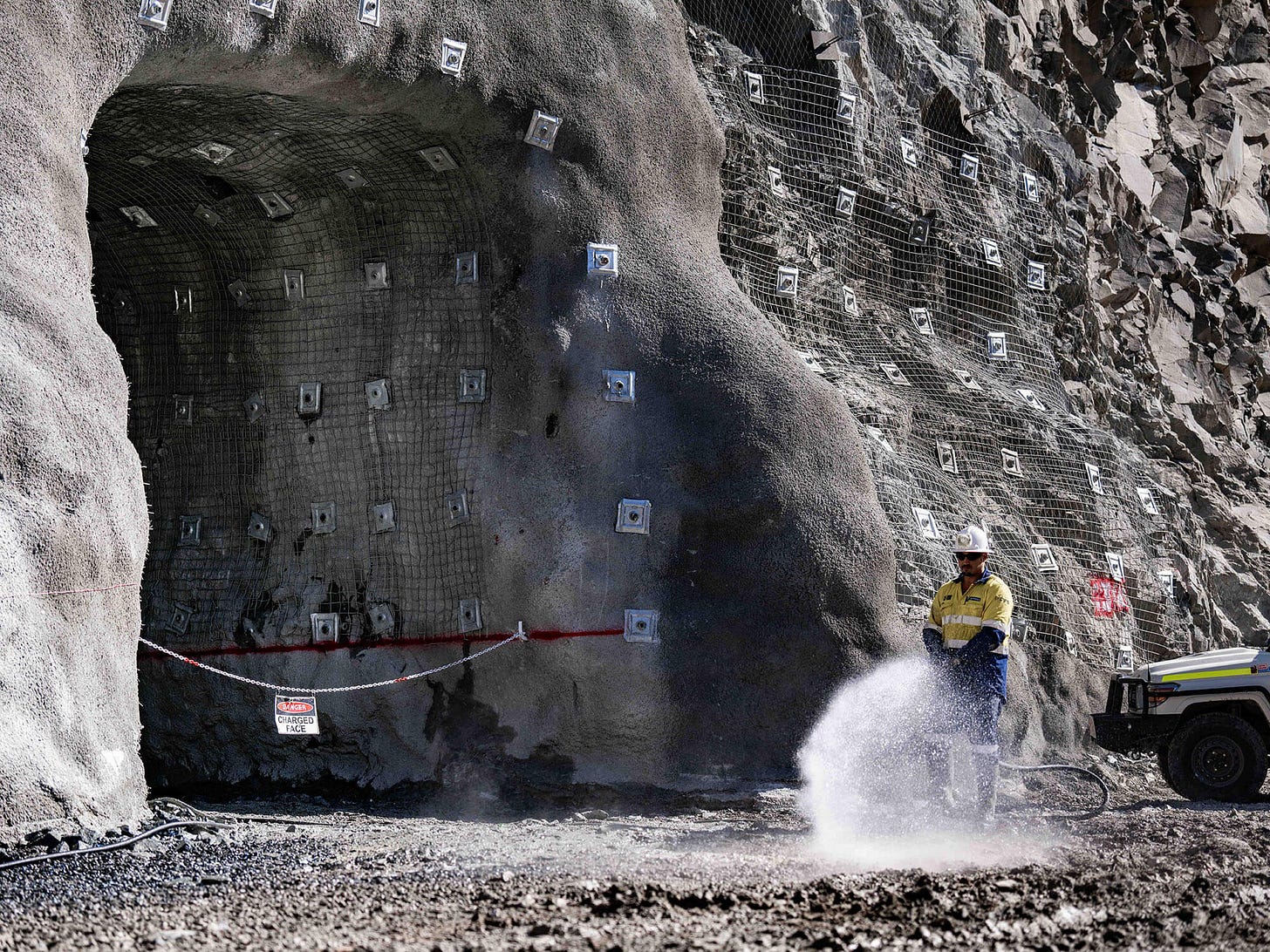Ramelius Maps Path to 500kozpa
Growing Australian gold miner fully funded for ‘no frills’ five-year plan
Western Australian producer Ramelius Resources (ASX: RMS) is coming off a record year and while the coming year will be weaker, the company is forecasting 170% production growth in between now and the end of the decade.
In the 12 months to June 30, Ramelius produced 302,000 ounces of gold at all-in sustaining costs of A$1551 an ounce, or US$1008/oz, at an “industry leading” EBITDA margin of 68%.
The company generated underlying free cashflow of A$694.9 million, which was second on the ASX behind Evolution Mining (ASX: EVN).
Today, Ramelius announced guidance for the 2026 financial year of 185,000-205,000oz from the Mt Magnet hub at ASIC of A$1700-1900/oz.
The company is on track, having produced 55,013oz in the September quarter at ASIC of A$1836/oz, with underlying free cashflow of A$129 million.
In the medium-term, Ramelius is aiming to reach production of 500,000oz per annum by FY30 by incorporating the newly acquired Dalgaranga project into the Mt Magnet hub and developing the Rebecca-Roe project near Kalgooorlie.
“Put simply, this is a no frills, no smoke and mirrors five-year plan that will deliver a heck of a lot of value for shareholders,” Ramelius managing director Mark Zeptner said during a conference call on Tuesday.
Mt Magnet the powerhouse
It’s been 89 days since Ramelius closed the A$2.5 billion acquisition of Spartan Resources to take ownership of Dalgaranga and its high-grade Never Never discovery.
Ramelius reported an initial reserve of 1.6 million ounces grading 7.3 grams per tonne gold for Never Never, taking group reserves to 4.2Moz at 1.9g/t gold.
“To my knowledge, it’s the highest-grade undeveloped gold deposit in Australia,” Zeptner said.
A prefeasibility study for Never Never was released on Tuesday, outlining 1.8Moz of gold production over 11 years at AISC of A$1128/oz.
Based on a gold price of A$4500/oz, the project has an after-tax net present value (5% discount rate) of A$3.5 billion.
While Dalgaranga has a plant on care and maintenance, Ramelius decided the preferred option was to upgrade the existing Mt Magnet plant from 2 million tonnes per annum to 4.3Mtpa for capital costs of A$223 million.
Pre-production capex for Never Never is A$76 million, while site infrastructure costs are expected to cost A$82 million.
By FY30, Mt Magnet is set to be producing 360,000-400,000oz of gold at AISC of A$1850/oz.
Zeptner said that would make Mt Magnet the fifth-largest production centre in Australia with the second-lowest costs.
From FY31-35, guidance for Mt Magnet is 340,000-380,000ozpa at AISC of A$1585/oz.
Zeptner stressed the outlook was conservative and did not account for further exploration success.
Ramelius plans to spend up to A$80 million on exploration at Mt Magnet this financial year.
Rebecca-Roe plan released
Ramelius also released the definitive feasibility study for its Rebecca-Roe project, outlining a 130,000ozpa operation at AISC of A$2625/oz over nine years.
“Whilst we can acknowledge Rebecca-Roe will be a higher cost operation compared to Mt Magnet, as most are, it does compare pretty favourably to our peers at this cost level, without naming names, which generally sit at A$2600-2800/oz,” Zeptner said.
The study returned an NPV of A$692 million, internal rate of return of 34% and undiscounted cashflow, after tax, of A$1.03 billion.
Capital costs for the 3.25Mtpa plant are estimated to be A$188 million.
The company has made a final investment decision but pushed back the development by just over a year to focus on Mt Magnet.
Mining and construction are expected to begin in the December 2027 quarter, with first gold production forecast a year later.
Rebecca received environmental approval in August and is hoping to receive approval for Roe by late 2027.
Fully funded
The five-year plan will be fully funded from existing cash.
At the end of September, Ramelius had cash and bullion of A$827.7 million and an undrawn revolving credit facility of A$175 million for total liquidity of A$1 billion.
“Our balance sheet proves our position as a sector leader in cashflow generation,” Zeptner said.
“We’re confident this will continue for the next 10 years.”
FY26 will be the weakest year of the next five years and the company has also flagged a A$118 million tax payment, due in December, and elevated growth capital expenditure of A$192-212 million.
Ramelius expects its cash balance to remain above A$500 million at June 30 next year, based on a gold price of A$5000/oz, about A$1000/oz below current levels.
From FY27 onwards, Ramelius is forecasting free cashflow generation to increase year-on-year and from FY30 have annual free cashflow averaging more than a A$1 billion a year to at least FY35, based on a gold price of A$4500/oz.
At the current gold price of around A$6000/oz, free cashflow generation this financial year would be just under A$250 million, doubling to A$500 million in FY27 and reaching A$1.7 billion in FY30.
“To my knowledge, there is no other mid-tier gold company out there globally that can demonstrate 170% production growth, be increasing free cashflow generation year-on-year and once they pass a heightened investment period, be generating over A$1 billion annually in free cashflow,” Ramelius chief financial officer Darren Millman said.
Millman said the board has been having conversations around capital management and were keen to maintain and grow shareholder returns.
Early next year, the company will release a new capital allocation framework, which could include share buybacks.


